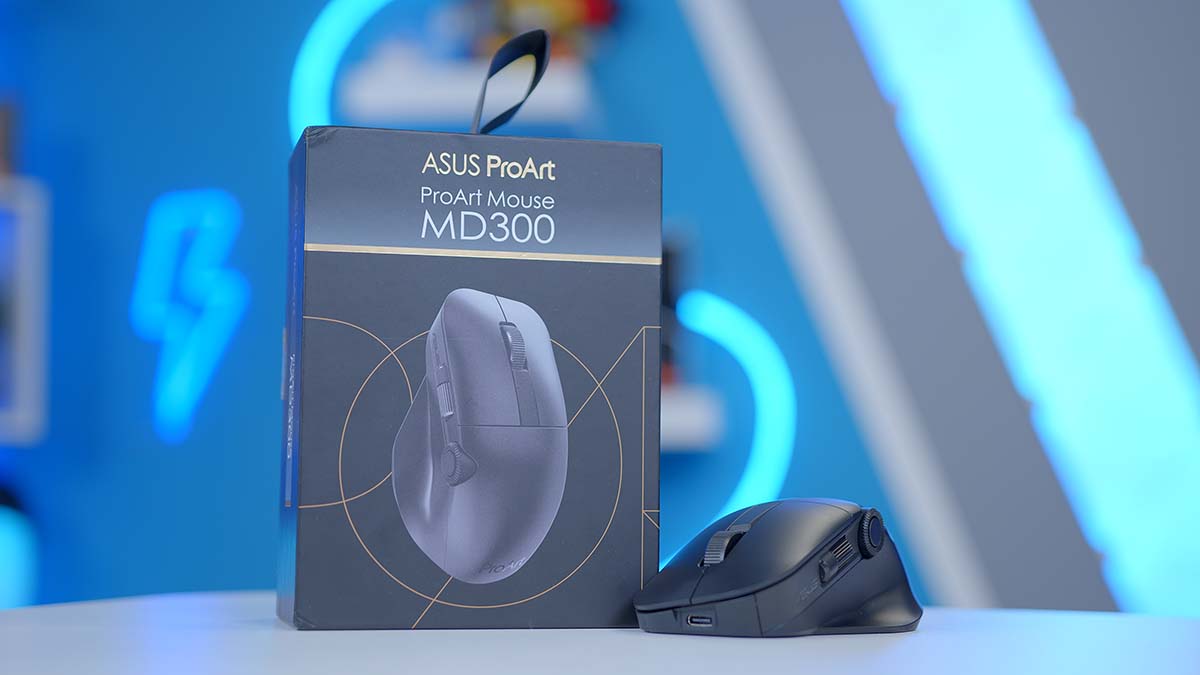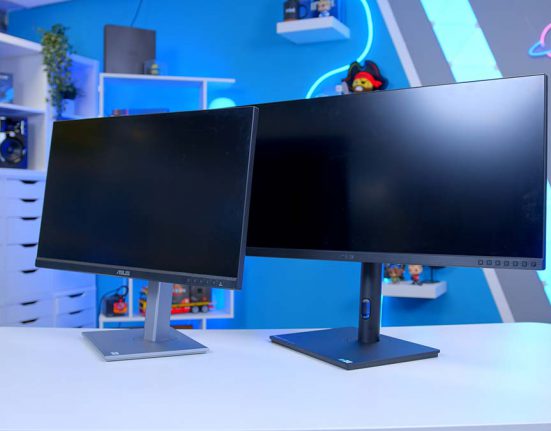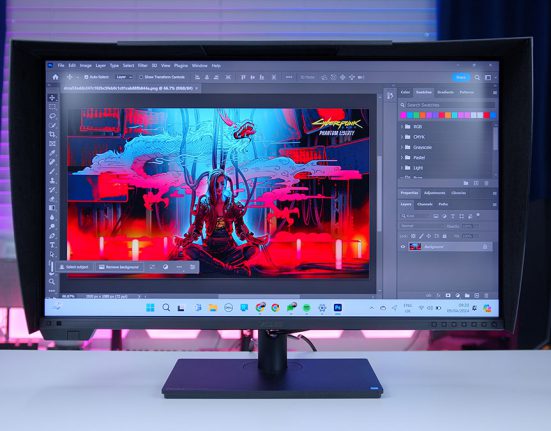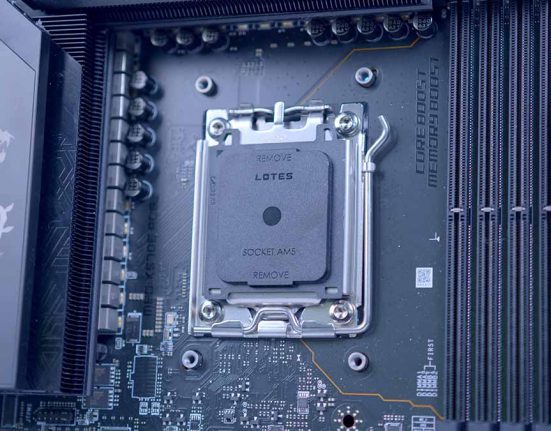Introduction
When picking peripherals to accompany one of our PC builds, we tend to focus on the gaming mice, keyboards, and headsets, as most of the systems we create are configured with gaming in mind. However, there are plenty of great accessories available that aren’t focussed on work rather than play. Instead, these designs prioritise comfort and practicality to streamline workflow and make creative tasks much easier to execute.
Mice are a great example of this, as there are plenty of options that are targeted towards creative and productive people. ASUS are the latest to throw their hat in the ring, with the ProArt Mouse MD300 promising to offer a luxurious experience whilst navigating through various editing and workplace software.
Suggested Article: Best Wireless Gaming Mice to Buy in 2023
But does the ProArt Mouse MD300 have the design, features, and functionality to become a sought after asset within the GeekaWhat office? More importantly, is this wireless mouse worth considering for your of workplace environment? To find out, we’ll be analysing this wireless mouse in detail.
Buy the ASUS ProArt Mouse MD300 on:
Should You Buy An Ergonomic Mouse?
Before getting into the details of the ProArt Mouse MD300, it is worth considering whether a professional mouse with an ergonomic layout is the ideal choice to suit your needs. Firstly, if you plan on doing any form of gaming, then you’d be much better off with a gaming mouse. This is simply due to their lower latency, greater sensitivity, and lighter weight being much better for gaming scenarios.
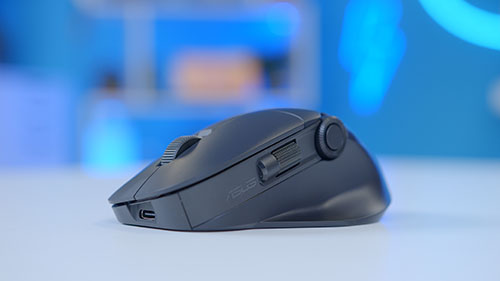
It’s much easier to find a gaming mouse that can provide good ergonomics and functionality suitable for a workplace than it is to find a design targeted towards professional that also has the performance needed to keep up with the demands of gaming. Also, a high-end gaming mouse is typically available for cheaper than its work-based counterparts, as even the best gaming mice can be found using a wired connection, whereas most professional mice stick to wireless connections.
That being said, there are plenty of reasons to pick up a productivity mouse, especially if you don’t plan on doing much gaming on your desktop. One of the biggest upsides to these designs is the improve comfort, as the ergonomic shapes and softer feel makes it incredibly easy to use these devices throughout the day without experiencing cramp or fatigue. Also, they tend to include multiple ways to connect wirelessly, making it easy to switch between devices or take it with you.
ASUS ProArt Mouse MD300 Design & Aesthetic
Moving our attention back towards the ASUS ProArt Mouse MD300, it’s clear to see that this wireless mouse is designed with luxury in mind. Just from the box alone, this product radiates professionalism, in a similar fashion to many of the ProArt Monitors we’ve previously reviewed. Opening up the box, we were greeted with the MD300 on full-display, which led to a good first impression.
Compared to the plethora of gaming mice we’ve tested, the overall aesthetic of the MD300 is much sleeker. Whilst the absence of RGB lighting might play some part in that, the glossy exterior and small white specks create a sparkling shimmer when caught at the right angle. However, this effect is fairly subtle, which means the design isn’t too distracting and will blend in easily into a workplace environment.
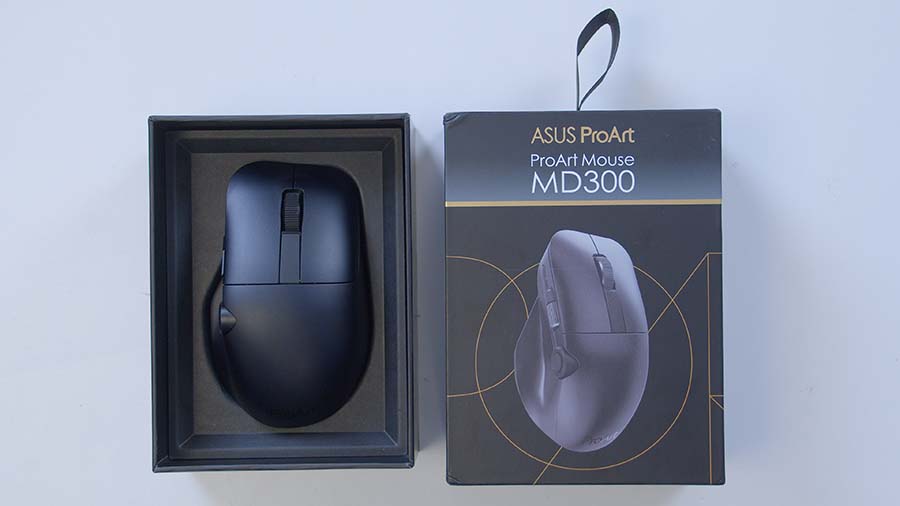
As for the design, this mouse has an extremely ergonomic form factor, making it very comfortable in the hand. Unfortunately, an asymmetrical shape is taken to achieve this, which means the MD300 is not suitable for left-handers. But for most users, the shape of the MD300 does well to provide a natural and comfortable resting position for your hand, making it easy to use for extended periods. On top of this, all of the buttons are placed in positions that are easy to reach, meaning you barely have to lift a finger to navigate.
Whilst most of the design is made of plastic, the metallic scroll wheels add a premium touch that feels durable and reliable. Whilst the glossy exterior does contribute the premium nature of the MD300’s design, it does lead to marks and smudges showing up, meaning users will have to clean the shell regularly to keep the MD300 looking its best.
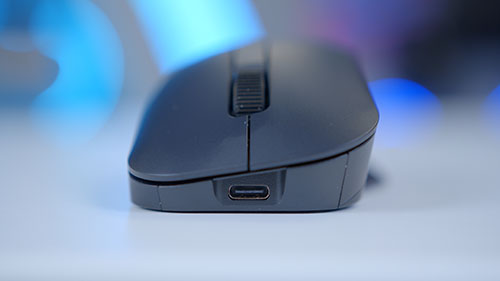
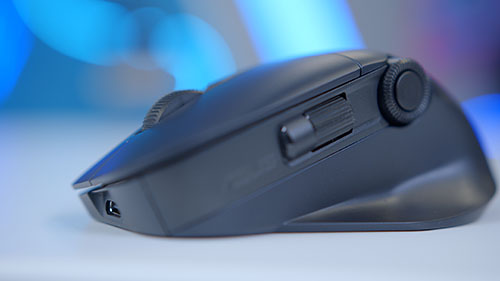
ASUS ProArt Mouse MD300 Specs & Performance
On a mouse like the MD300, the performance is not as important as it would be on a gaming-oriented mouse. However, there are a few key factors that will influence the overall experience with a wireless design like this one. In terms of raw performance, the 1000Hz polling rate and 4200 DPI sensor is more than enough to adhere to the standards for modern mice, which means the MD300 could even be used for casual gaming if necessary.
Weighing in at 109 grams, the MD300 certainly has some heft to it. Whilst this is often considered a weakness for gaming mice, the additional weight on a productivity-based design isn’t always bad. In fact, I prefer using a heavier mouse when working, as it provides greater precision and control over cursor movements.
| Specifications | ASUS ProArt MD300 |
|---|---|
| Max DPI | 4200 |
| Weight | 109g |
| Polling Rate | 1000Hz |
| Programmable Buttons | 6 |
| Connectivity | 2.4GHz, Bluetooth |
| Battery Life | Up to 150 Days (3600 hours) |
However, arguably the more important performance-based aspect of this mouse is the wireless connectivity. With the choice of connecting with either a 2.4GHz USB dongle or via Bluetooth, the ProArt Mouse MD300 is very versatile, allowing users to connect to up to 4 devices at once. ASUS also state that the MD300 can last up to 150 days on a single charge. Whilst I haven’t had quite that much time to test this hypothesis, there haven’t been any instances where the MD300 has run out of charge over the week or so that I’ve been using it.
Features We Like
Ergonomic Form Factor
One of the main selling points of a mouse like the MD300 is the ergonomic design, which ASUS have thankfully managed to achieve here. This is by far one of the most comfortable designs I’ve tested, especially over prolonged sessions, with the combination of the soft-touch plastic and moulded shape making it very easy to hold. As someone who also uses a Logitech Master 2S at home, I’d say the overall feel of the MD300 is more comfortable, even if I prefer the wider shape of the 2S.

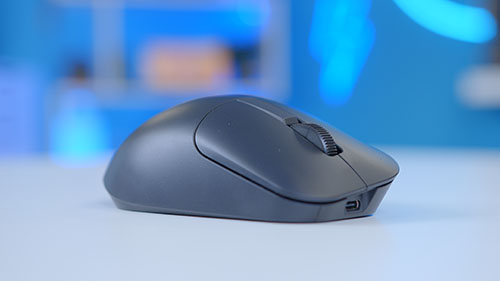
Multiple Scroll Wheels
From a practical point of view, the multiple scroll wheels on this mouse makes it a great choice for editing photos or videos, as these dials can be used to offer greater control when fine-tuning sensitive areas of an image, or to make navigating through the various menus and settings easier. Whilst having multiple scroll wheels isn’t a revolutionary design choice, the ASUS Dial lets the MD300 stand out from the competition.
Instead of adding another conventional scroll wheel to this design, ASUS have included a 360° Dial that can be rotated clockwise and anti-clockwise. This leads to greater range of movement for improved precision when making adjustments. Whilst this seems to be intended to optimise specific tasks in apps like Photoshop, I also very useful as a volume rocker. Plus, there is an additional button inside the dial, which only adds to the MD300’s versatility.
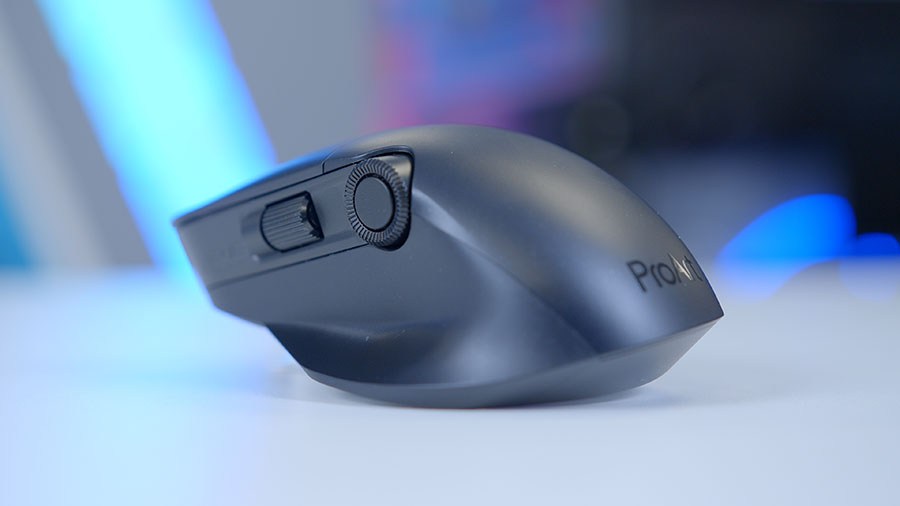
Armoury Crate Software Customisation
We’ve had our issues with the ASUS Armoury Crate software in the past, but the way in which this mouse is implemented shows the true potential of this software. After getting through the main Armoury Crate software to the MD300 page, the software is very easy to understand and navigate.
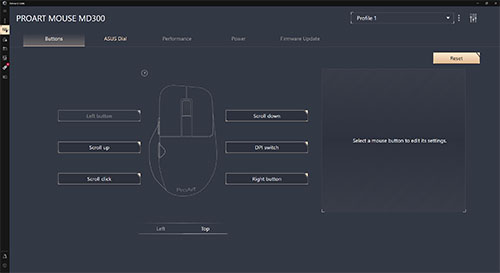
Admittedly, the customisation of this design is less extensive than most gaming mice, but the visualisation of each button and setting is something that ASUS should strive for in the rest of the Armoury Crate software.
Features We Don’t Like
ASUS Dial Positioning
For the most part, the ASUS Dial is an amazing addition to a professional mouse, the positioning can be a nuisance at times. There have been countless times where I’ve found myself accidentally knocking the dial while trying to grab the mouse after typing, leading to disruptions in my workflow. Because of this, I’d suggest mapping the dial to settings that won’t have a major on your work progress, such as volume, or stick with the ASUS Dial option, as this requires you to press the embedded button in order to make adjustments.
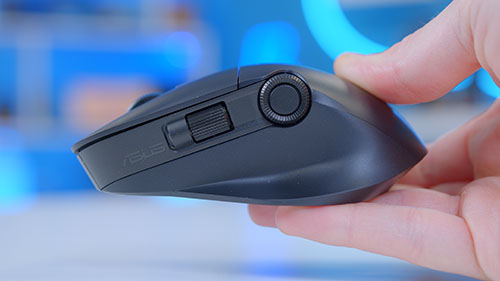
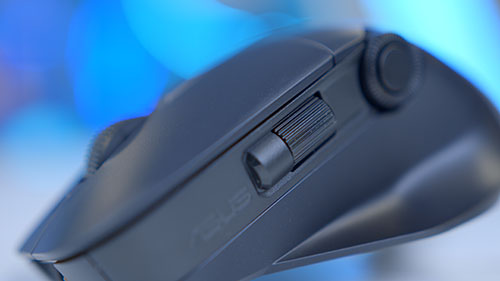
Prone to Smudges and Marks
Another small hinderance with the design during my time with the MD300 was its tendency to show marks and smudges. There were plenty of instances where I tried to wipe the mouse to get rid of marks with no prevail, which is the last thing you want to deal with in the workplace. Additionally, longer sessions of constant use did tend to make my hand feel a bit clammy in some cases.
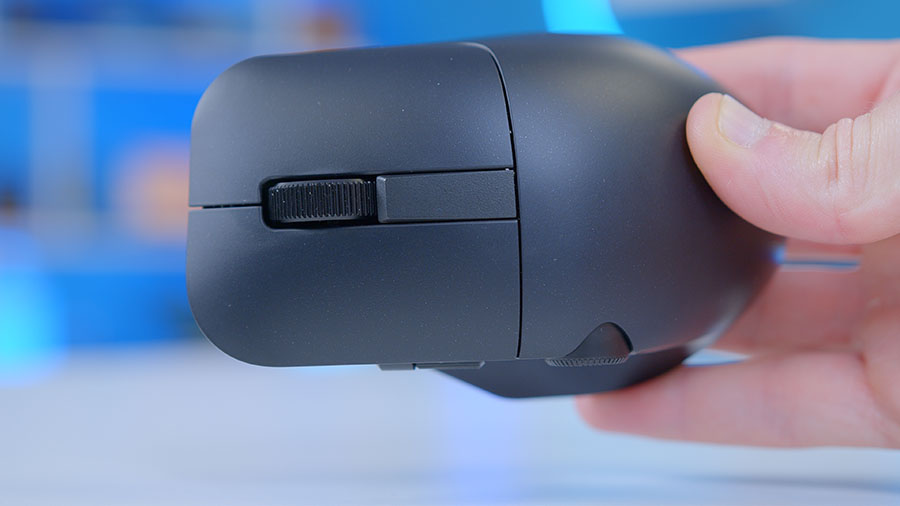
No Wired Connectivity
Usually, we’d be talking about the lack of wireless connectivity as a downside, but the MD300 has flipped the script. Instead, this mouse is strictly connected via Bluetooth or a USB receiver, only making use of a wired USB cable for charging or firmware updates. Whilst the dual-mode connection and long battery life does mean you should be able to maintain a wireless connection at all times, there is a vulnerability to running out of charge at anytime.
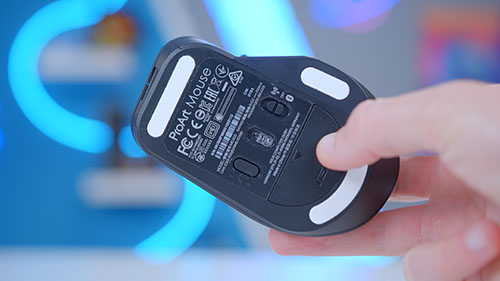
Conclusion
ASUS ProArt Mouse MD300
Product Name: ProArt Mouse MD300
Brand: ASUS
-
Features
-
Design
-
Comfort
-
Value For Money
Summary
Overall, the ASUS ProArt Mouse MD300 has been a very welcomed addition to my work setup, offering plenty of ergonomic and practical benefits. Whilst it is quite the migration from the lightweight and performance-based nature of most the gaming mice lying around the office, the MD300 is a well-design offering that is a great fit for the workplace. With an ergonomic form factor, the innovative ASUS Dial, and versatile connectivity, the MD300 has everything a professional would need to make their daily tasks as effortless as possible.
But before picking this mouse up for you and all your colleagues, there are a few factors to consider. For example, the premium price point means this design is meant to be one of the main peripherals within your setup, rather than a secondary option to use when you need it. As a result, those interested in gaming or other scenarios outside of creative tasks will be able to find a more well-rounded option for around the same price. Also, the right-handed shape prevents lefties from using this design and the shell is prone to showing marks.
Otherwise, the MD300 is an excellent choice for professionals, with the incredibly ergonomic and practical design being a blessing any office environment. Because of this, I won’t be looking to replace the MD300 anytime soon.
Pros
✅ Sleek and ergonomic design.
✅ ASUS Dial is great for productivity.
✅ Lots of practical features.
Cons
❌ Quite expensive.
❌ Not suited to left-handed users.
❌ Can’t connect using wired USB.


